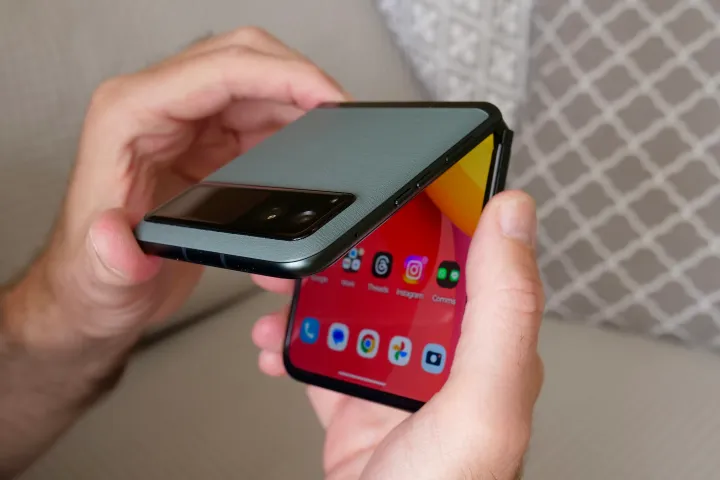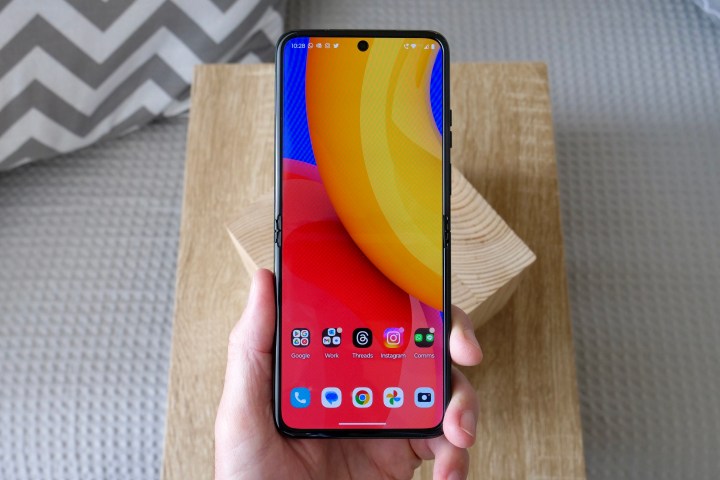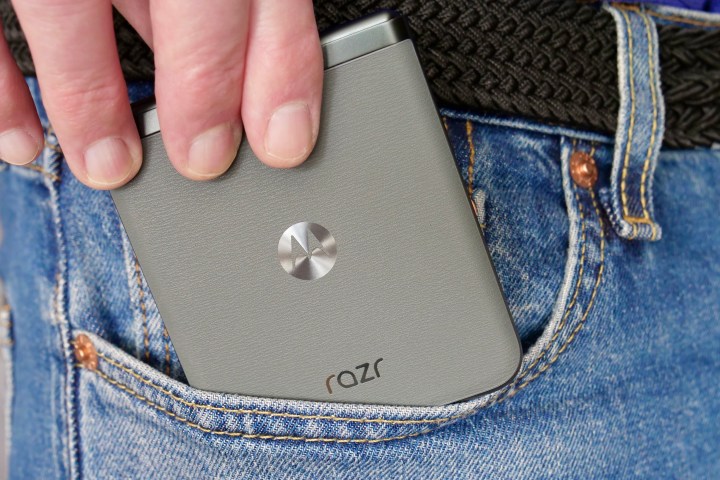
Are you a bit bored with your current phone? Do you want something more exciting, more futuristic, and more fun — all without spending tons of money?
Until now, a wish list item like this was unlikely to be realistic. But I recently spent a few weeks with the Motorola Razr (2023), and I want to explain how it rapidly became one of my favorite phones of the year, how it meets the criteria described above, and why you’d be wise to pick one up soon.
Now’s the time to buy a foldable

When folding phones first arrived, they were very expensive; the big-screen, flagship versions still are, which has likely made many people dismiss foldables as being unobtainable or overpriced.
Well, those times are changing, as the Motorola Razr (2023) is a midrange folding phone — and it has a midrange price to go with the specs. This puts it well within reach if you’re already considering a Samsung Galaxy A54 or a Nothing Phone 2, and it’s even cheaper than the OnePlus 11 and the Google Pixel 8.
But it’s nothing like any of these phones. The Motorola Razr (2023) is a compact folding phone, just like the Samsung Galaxy Z Flip 5, but for almost half its $1,000 price. The Razr (2023) is currently on offer for $599, a discount of $100 off its normal retail price. Sure, the Galaxy Z Flip 5 does have higher specifications, but if you a phone that you can fold up, then the Razr (2023) will happily scratch that itch for a whole lot less money than the Z Flip 5.
At this price, the Razr (2023) is really the first folding phone you can consider without thinking you’re massively overspending on a new phone just for the chance to fold it. Let me tell you, though — when you get one, you’ll find all the folding and flipping doesn’t get old. We’ve been patiently waiting for a brand to shake up foldables and help propel them into the mainstream, and Motorola is doing exactly that with the Razr (2023). It joins Tecno as one of the key brands working hard to bring exciting foldables to more people this year.
The Razr (2023) isn’t just a cheap phone

Am I saying you should only consider the Razr 2023 because it’s quite cheap? No. When I reviewed, used, and really liked the Razr (2023), the U.S. price wasn’t even known. I reviewed its U.K. equivalent, called the Razr 40 (which is the same phone with a different name), and it won me over. Not because of the price, but because the flip phone design is fantastic, and the phone itself is really good.
All folding phones are exciting pieces of hardware, but I love compact folding phones because they’re so unbelievably convenient. They mark a return to the days when mobile phones were modestly sized, but without impacting ability or forgoing modern tech. It’s one of the main reasons I fell for the 6.9-inch Razr (2023), as it just slips in my pocket or bag and I barely know it’s there until I want it. It’s a huge advantage, and it’ll change the way you think about phones with giant screens.

The low price may make you wonder if it has been made like a cheap phone, especially considering the cost of such high-tech hardware. No major corners have been cut with the Razr, so this couldn’t be further from the truth. The textured rear panel is wonderfully tactile and keeps the phone clean, as it can be wiped down to remove any greasy prints. It comes in some cool colors, and although the hinge isn’t quite as refined as that of the Galaxy Z Flip 5, it has a far superior feel and motion to the Motorola Razr (2022). Plus, it’ll always be fun to open and close a folding phone.
Midrange doesn’t mean mediocre performance or that Motorola has made it dull, either. The Razr did everything I wanted, the software is speedy and clean, and there’s the cutest character called Moo living on the cover screen to give it character. Yes, character. It may sound silly, but Moo made the Razr feel friendly, and that’s rare for any piece of tech. The lack of an always-on screen irritates me, but I’ll forgive the Razr when it manages to be both friendly and fun.
Good phone, good price, what else?

On the surface, the Motorola Razr (2023) is just another good phone at a good price, just like the Google Pixel 8 is also a good phone at a good price. What makes the Razr unusual and worth your attention is that it’s a compact folding phone at a good price. That helps remove one of the things I have always suggested when talking about this type of phone in the past: that you need to try one out before buying.
The reason I’d tell people this was that very few would take a risk on a phone that cost $1,800, so you needed to find out for yourself how transformative they can be. The Razr (2023) isn’t the definition of a bargain, but it’s priced so sensibly that there’s very little “risk” involved. Compact foldables are just as usable as similarly sized non-folding phones. but with a lot of added convenience. Now, you can find out for yourself without breaking the bank.
I fell in love with the Motorola Razr (2023) not just because it’s a good phone, but also because it has the potential to introduce so many people to the joy of a modern, folding flip phone. At some point, Motorola is going to put the price up to $699, and that is going to make it a bit less tempting, so don’t miss out on this golden opportunity to enjoy this fun, futuristic, characterful, and capable smartphone.
Editors' Recommendations
- Why you should buy the iPhone 15 Pro instead of the iPhone 15 Pro Max
- This new folding phone costs less than half the price of the iPhone 15 Pro Max
- Motorola’s new Android phone looks amazing, but there’s a catch
- Should you buy the Samsung Galaxy Z Fold 5 or wait for the Z Fold 6?
- Samsung’s next folding phone could be cheaper than we thought



